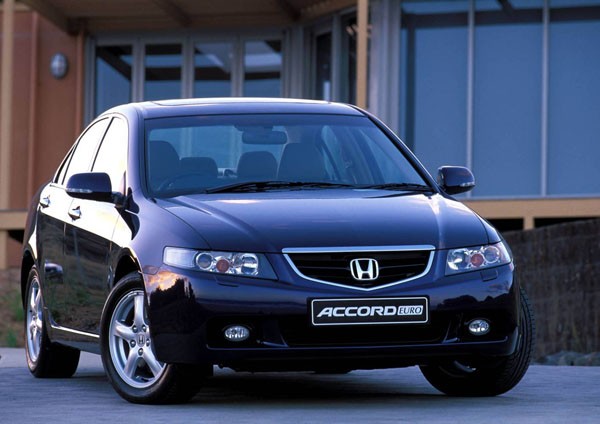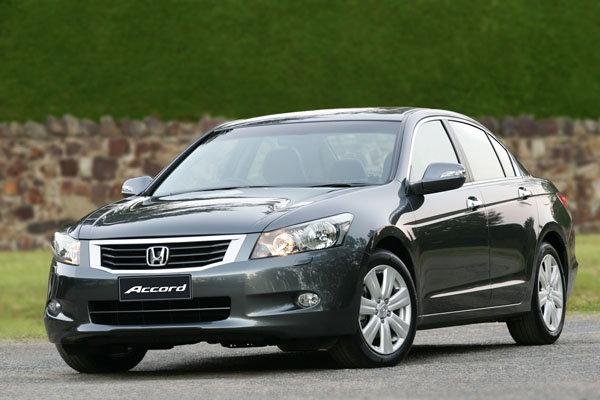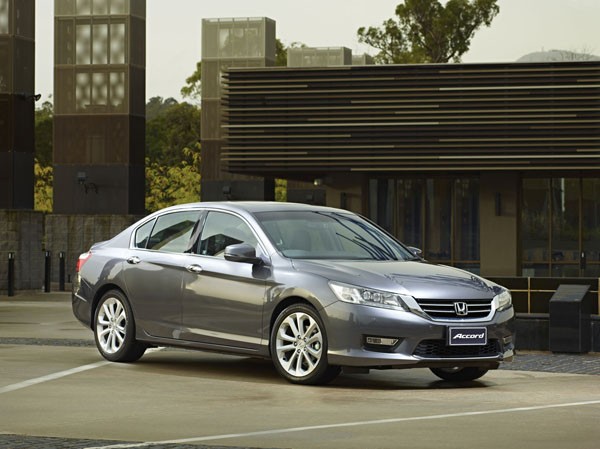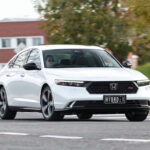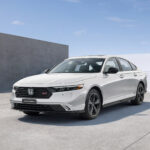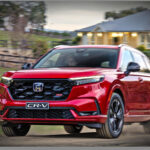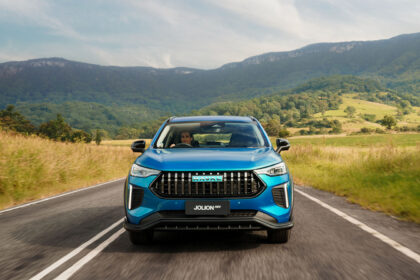Japanese maker Honda sells its Accord in Australia in two different market segments. The smaller one, called Accord Euro as it leans in the European direction in handling, has a good reputation amongst those who enjoy driving and like the mix of Japanese build quality and European dynamics.
The other variant, simply called the Honda Accord, is larger, American-based and leans in the direction of passenger comfort rather than sporty handling. In its latest form, released midway through 2013, it’s almost Commodore and Falcon in size.
Australia is the only country that takes imports of the two significantly different models, showing the high regard in which our country is held by the head office chiefs in Japan.
Honda Accords in Australia are four-door sedans (though the European market also has a station wagon variant). Interior space is good, though the Euro is smaller than the American Accord so for adults to get comfortable in the rear seat the front seats have to be set a few notches forward.
Boot space is good, with a wide, low opening which makes it easy to load. Naturally, the boot in the larger car has greater volume, but the Euro’s luggage area is more than acceptable if only couples are using the car. Honda Australia prefers to rely on the CR-V instead of the wagon downunder which is a pity because we once did a long holiday in the UK in an Accord wagon and it worked well, being easy of fuel and with a sophisticated feel on most road surfaces.
The Honda tradition of designing cars with good outward visibility makes the Accord easy to drive and park, as well as being making it comfortable for young children to see out of. However, crash safety regulations that made thick pillars necessary mean that there’s less outwards visibility in the these post-2003 Accord. Not that they are bad, it’s just that they’re not as good as the excellent older models.
A four-cylinder engine used in the Euro model and the American Accord has a capacity of 2.4 litres. The engine in the Euro is set to a higher state of tune than the one in the American car so needs high octane unleaded petrol – 95 or 98. The Accord is happy to run on 91 octane standard unleaded.
A V6 unit is used in the American Accord, but not in the Euro. The 2008 model change saw an increase in the V6 engine size from 3.0 to 3.5 litres. The newer engine design offers plenty of relaxed torque and uses less fuel than the smaller engine it replaced.
The two different Accords don’t always run side by side on release dates and at times the American Accord can be considerably ahead of the Euro in its design.
The Accord Euro is offered with a six-speed manual to suit its sporting nature, though in Australia most are fitted with a five-speed sequential automatic as manuals are a dying breed downunder. The American car is imported only with a five-speed automatic transmission.
The Honda dealer network usually concentrates on the major Australian population centres. If you have troubles with the car in remote country areas it might take time for parts to be sent out, though it’s unlikely to be more than a couple of business days.
Honda spare parts costs are generally in line with others in this class, perhaps a tad higher for more unusual components.
These are relatively complex cars, especially from the 1998 model, and are best left to professional mechanics. A good amateur, armed with a workshop manual, can tackle some of the routine work.
Insurance is generally reasonable as is only to be expected from a car in this conservative market segment. Though the Euro is marketed as being sports-oriented, the Accord Euro is seldom driven in that manner; so its premiums are generally similar to those on the others in the range.
WHAT TO LOOK FOR
The engine should be all but inaudible at idle, even in the four-cylinder. Any roughness may indicate problems, perhaps costly ones.
Check there are no oily black stains in the exhaust pipe and the surrounding body and bumper. Make sure there isn’t a puff of oily looking smoke from the exhaust when the accelerator is floored after the engine has been idling for a minute or so.
Automatics should go into gear promptly and their changes should only be noticeable when you’re accelerating hard.
Manual gearboxes should move freely with no sticking or crunching on fast gearchanges.
Look at the condition of the interior, paying special attention to the top of the dashboard and the rear shelf for sun damage. Fading or cracking in these areas can be expensive to repair.
Feel and listen for suspension irregularities on rough roads. These cars, particularly the Accord ‘American’ are softly sprung and may be bottomed out on their suspension if thrashed on poor roads; not that that’s common, but…
Rust is not common but may have found its way into cars that have been badly repaired after a crash. If you’re not sure, have a professional check the Honda.
CAR BUYING TIP
Upmarket Japanese cars tend to be owned by careful, conservative buyers who drive cautiously and have their car serviced by the book. No promises, though…




